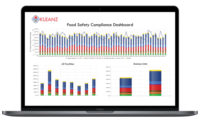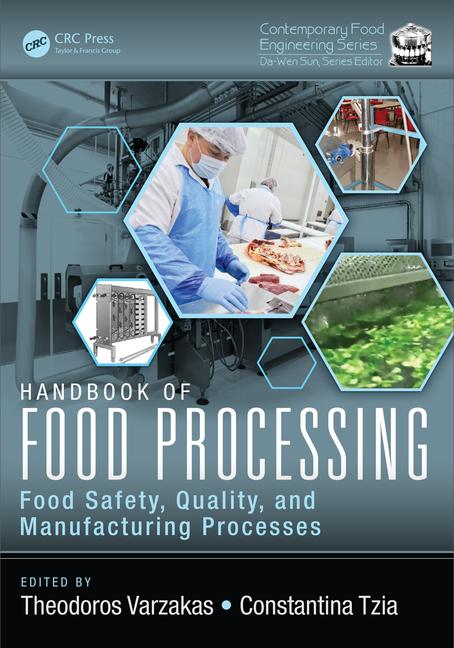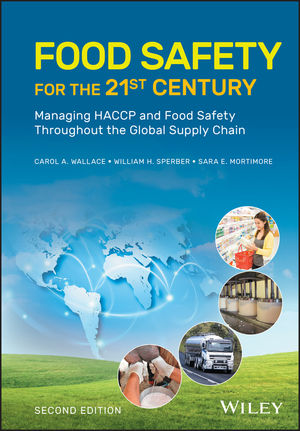Why Blockchain Will Be Used to Improve Distribution Food Safety, Quality, and Traceability

With the passage of the Food Safety and Modernization Act (FSMA) comes the final rules on the Sanitary Transportation of Human and Animal Foods. Combined with the FSMA Preventive Control rules designed to establish food safety requirements throughout the food supply chain, serious documentation challenges face the food logistics sector.
 Food distribution is increasingly complex. Given the types of food safety hazards depicted as global food hazards over the past 10 years (Figure 1), food shippers, carriers, and receivers have been placed in the food safety bull’s eye. Food safety supply chain controls, preventive controls, and transportation rules provide a focus that leaves logistics in an unenviable position. No company will escape blame due to the range of shared liability established by the U.S. Food and Drug Administration (FDA) rules.
Food distribution is increasingly complex. Given the types of food safety hazards depicted as global food hazards over the past 10 years (Figure 1), food shippers, carriers, and receivers have been placed in the food safety bull’s eye. Food safety supply chain controls, preventive controls, and transportation rules provide a focus that leaves logistics in an unenviable position. No company will escape blame due to the range of shared liability established by the U.S. Food and Drug Administration (FDA) rules.
In short, vicarious liability is reversed and passed from carrier to receiver or from supplier to carrier because the “customer” is now clearly responsible for the supplier’s ability to control food safety issues. Under the rules, the “customer” in any case must qualify and certify the supplier’s ability to control food safety under the rules.
 The FSMA transportation rules require the supplier and carrier to establish a signed written agreement regarding who is responsible for sanitation and temperature monitoring and for the collection of all data. This mandatory food safety documentation will be used to help establish liability in the event of a recall.
The FSMA transportation rules require the supplier and carrier to establish a signed written agreement regarding who is responsible for sanitation and temperature monitoring and for the collection of all data. This mandatory food safety documentation will be used to help establish liability in the event of a recall.
The concept is illustrated by Figure 2.
The farm is seen to distribute pesticides, chemicals, and microbes in the water, soil, and produce. Carriers move the product from the farm to distribution centers, restaurants, and retail outlets, usually within traceability and temperature-monitoring guidelines. Traceability and temperature-monitoring data are combined with the food safety data collected by the farm to form documentation that establishes the degree of preventive control established by the system.
 The potential for complexity is illustrated in Figure 3. There are 17 different hand-offs between the time the product is harvested and placed in bins, and received at the store. With pallets being broken down at distributors, case- or item-level traceability becomes necessary, and the financial trail blurs.
The potential for complexity is illustrated in Figure 3. There are 17 different hand-offs between the time the product is harvested and placed in bins, and received at the store. With pallets being broken down at distributors, case- or item-level traceability becomes necessary, and the financial trail blurs.
Provenance as a product of chain of custody disappears into the mist. What happened or did not happen during food safety throughout these operations is now unknown, making all players responsible.
Think Networks, Think Provenance
 By networking the supply chain players and connecting the various entities through shared access to financial, food safety, movement, traceability, and other data, a complete real-time view of the status of the food during logistical processes becomes possible (Figure 4).
By networking the supply chain players and connecting the various entities through shared access to financial, food safety, movement, traceability, and other data, a complete real-time view of the status of the food during logistical processes becomes possible (Figure 4).
With many supplier-customer relationships now requiring access to food safety data and with a growing number of companies moving to blockchain distributed ledger systems, the stage is set for combining food safety data (throughout the entire food supply chain) with a financial and legal (chain-of-custody) trail that moves vicarious liability into the forefront. By integrating financial, traceability, and food safety data into a single blockchain system, looking for probable causes based on calculatable outbreak risk levels allows companies to quickly track back to recall origins.
The potential for consumer and company financial protection is enormous.
Indeed, major players are already in the game: IBM, Walmart, Port of Rotterdam, Kroger, Unilever, Nestle, Dole, McCormick and Company, McLane Company, Driscoll, Tyson Foods, Golden State Foods, and even the government of Haiti are in play.
Think Traceability, Think Chain of Custody
Since blockchain systems have a foundation in financial transactions, some controls become critical. A shared ledger (a system of financial records between companies) is established. Confidential digital records are unalterable (resistant to forgery) and allow all network participants access and review capabilities within permissible limits. Participants are allowed nodal access through permissions and can control what they allow others to see. The systems are consensual, meaning that food supply chain member participants are known and trusted and all transactions can be verified and committed to the ledger through agreement.
Blockchain systems allow for the creation of what are called “smart contracts” that must be fulfilled at each supply chain transition point. For instance, laboratory test data for soil, product, or processing line hazard test results may become a preventive control food safety requirement between a supplier and a processor. Likewise, transportation traceability, sanitation, and temperature control data may also become a smart contract requirement. Such data can be stored by each participant in cloud data bases (Figure 4) with permissions for sharing the data established between suppliers, carriers and receivers.
Building a Blockchain-Integrated Food Safety System
 Figure 5 illustrates the future. There are three primary parts to the figure. At the bottom (1), product is shown flowing from a producer, through a carrier, through multiple hand-off points to the retail or restaurant outlet. A shared ledger is established (2) that allows players to review the status of all actions through local computer network dashboards (3). Outbreak risk levels can be calculated based on smart contract inputs (4). Players with missing traceability systems, poor temperature controls or a general lack of controls may be suppliers, but their risk levels are easily calculated. Low-risk players receive more business, whereas high-risk players can upgrade their systems or leave the network
Figure 5 illustrates the future. There are three primary parts to the figure. At the bottom (1), product is shown flowing from a producer, through a carrier, through multiple hand-off points to the retail or restaurant outlet. A shared ledger is established (2) that allows players to review the status of all actions through local computer network dashboards (3). Outbreak risk levels can be calculated based on smart contract inputs (4). Players with missing traceability systems, poor temperature controls or a general lack of controls may be suppliers, but their risk levels are easily calculated. Low-risk players receive more business, whereas high-risk players can upgrade their systems or leave the network
Smart contract inputs are shown on the right in this example. They are driven by industry requirements and regulations. International standards for traceability (5) and food safety (6) may become established. Transportation control data (7) including global positioning system (8) and special handling requirements (11) may become an included requirement.
Other industry and legal drivers for food safety standards, supply chain controls, foreign supplier controls, food safety certification, preventive controls, sampling and inspection data, packaging, and food defense certification are easy to include (9).
Other risk factors may also be established. Company recall and FDA audit data as well as environmental sampling data and Customs and Border Protection or Department of Homeland Security border or highway reject records (11) may be required to establish risk levels. These are the items FDA uses to calculate risk in preparation for random audits.
On the business side, product pricing, delivery and quality records (12) may all be used to help prioritize and select partners.
Summary
Given the increasing complexity of today’s logistical needs, food safety requirements, and laws, a new approach to food safety is rapidly gaining foothold. Based on blockchain’s shared ledger capabilities and ability of a blockchain system to support smart contract inputs, industry’s ability to establish an integrated food safety system is on the move. The future of chain-of-custody, provenance, traceability, and food safety is clearly visible today.
While some players in the logistics chain will hope that blockchain is years away, keep your eyes on the big boys, they are already in the game. And you can bet that with the United Kingdom leaving the European Union and the ongoing trade wars that blockchain systems will become increasingly critical to all trading partners.
John Ryan, Ph.D. holds a doctorate in research and statistical methods and has extensive international manufacturing quality and operations experience in large and small manufacturing operations. He is a retired Hawaii State Department of Agriculture Quality Assurance Division administrator where he won multiple awards for food traceability systems.
Looking for a reprint of this article?
From high-res PDFs to custom plaques, order your copy today!







.webp?t=1721343192)
